Steel Products Prices North America

Raw Materials Prices: Iron Ore, Coking Coal, Pig Iron, Scrap, Zinc
Written by Brett Linton
January 26, 2022
Prices for four of the seven steelmaking raw materials tracked in this SMU analysis increased over the last 30 days, while three products decreased. Through Jan. 26, coking coal prices rose 26% from one month prior, aluminum prices increased 10%, iron ore prices rose 8%, and zinc prices were up 2%. In that same time frame, scrap prices fell 10-13% and pig iron prices declined 1%.
Table 1 summarizes the price changes of the seven materials considered in this analysis. It reports the percentage change from one month prior, three months prior, and one year prior for each material.
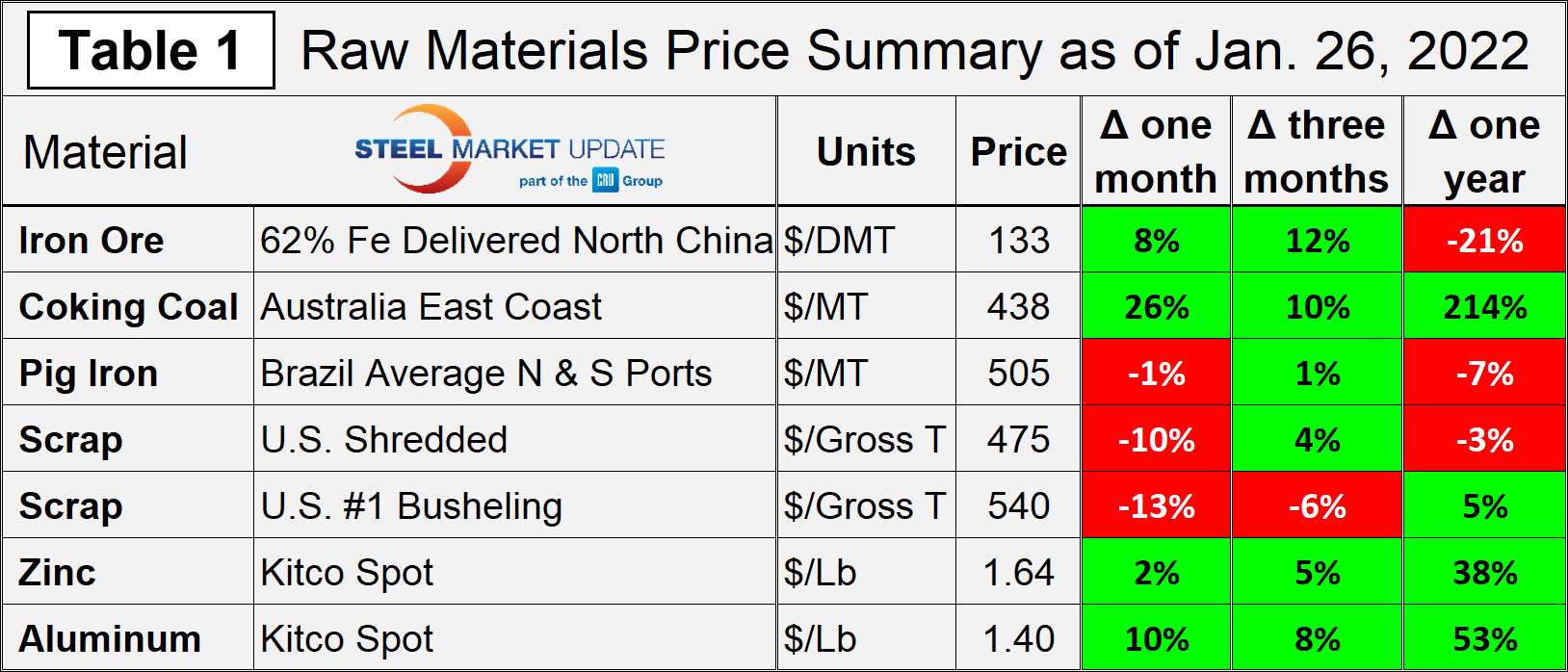
Iron Ore
After rising to record levels last summer, the Chinese import price of 62% Fe content iron ore fines declined throughout November, reaching an 18-month low. Prices have since risen and continue to trek upward; Figure 1 shows the price of 62% Fe delivered North China at $133 per dry metric ton as of Jan. 26. Iron ore prices have increased 8% in the last 30 days, up 12% compared to three months ago, but down 21% from the price this time last year. A Jan. 25 article from CRU explains, “The iron ore price has jumped up, largely due to bullish sentiment for steel demand in China… It was also pushed up by some additional restocking in the lead up to Chinese New Year.”
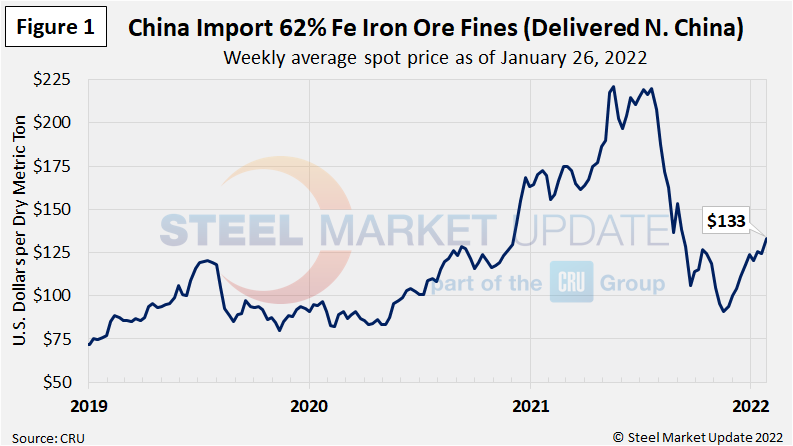
Coking Coal
The price of premium low volatile coking coal FOB east coast of Australia was $438/dmt as of Jan. 26, surpassing the previous high of $405/dmt seen in late-September (Figure 2). A CRU report notes “offers were limited and at these high prices very few buyers were willing to transact.” Prices have increased 26% in the last 30 days, up 10% compared to three months prior, and up a whopping 214% from prices one year ago. Prior to 2021, the last time coking coal prices were this high was over 13 years ago, in July 2008.
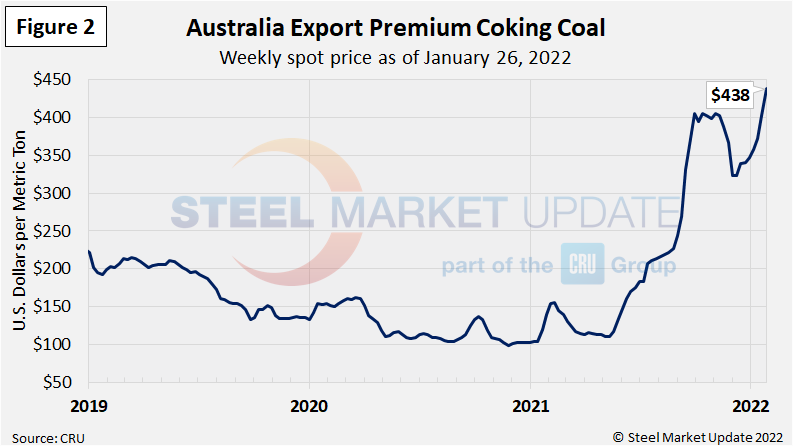
Pig Iron
Most of the pig iron imported to the U.S. currently comes from Russia, Ukraine and Brazil. This report summarizes prices out of Brazil and averages the FOB value from the north and south ports. The latest data shows pig iron prices continue to decline from the summer peak, now averaging $505 per metric ton in January. Although down compared to recent months, pig iron prices have remained historically high for over a year. Recall that pig iron prices had reached a multi-year low of $275 per metric ton in May 2020 (Figure 3).
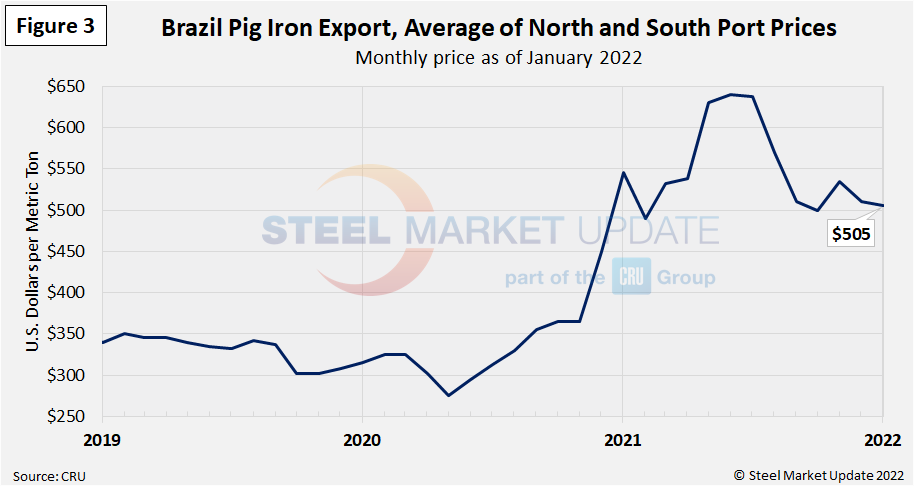
Scrap
Hot rolled steel prices fluctuate up and down with the price the mills must pay for their raw materials. Changes in the relationship between scrap and iron ore prices offer insights into the competitiveness of integrated mills, whose primary feedstock is iron ore, versus the minimills, whose primary feedstock is scrap. Figure 4 shows the spread between shredded and busheling scrap, priced in dollars per gross ton in the Great Lakes region.
Scrap prices eased from December to January, but are relatively in-line with levels seen three months prior and also one year ago. Shredded scrap prices declined 10% to $475 per gross ton (down from December’s 15+ year high), and busheling scrap prices declined 13% to $540 per gross ton (recall we saw a high of $670 last July/August). Prior to 2021, the previous record for scrap prices over the last decade was $510 per ton for busheling in December 2011, and $473 per ton for shredded in February 2012.
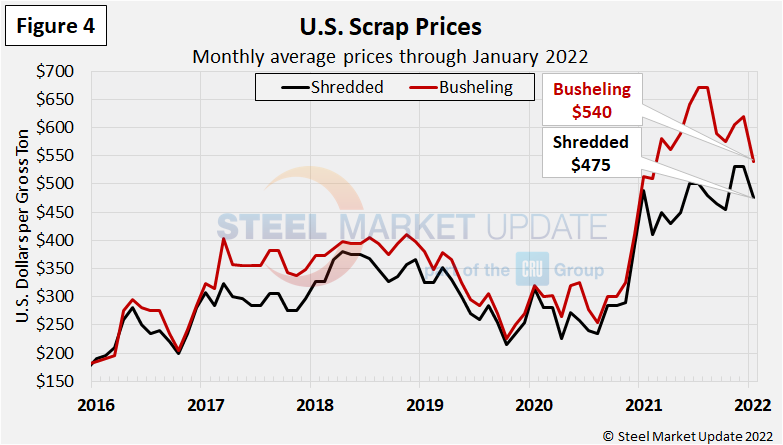
Figure 5 shows the prices of mill raw materials over the past four years. Iron ore prices are down 40% from the May 2021 peak of $221 per dry metric ton, while shredded scrap prices remain elevated.
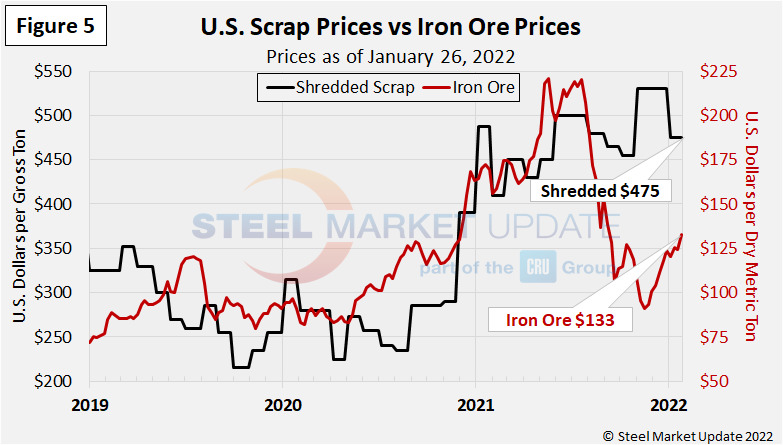
To compare the two, Steel Market Update divides the shredded scrap price by the iron ore price to calculate a ratio (Figure 6). A high ratio favors the integrated/BF producers, a lower ratio favors the minimill/EAF producers. At the current 3.57 ratio shown below, the cost advantage held by integrated producers was short-lived, having just surpassed the black four-year average ratio line in late-August 2021. Two months ago, we saw a ratio of 5.84, the highest seen since mid-2018. The scrap to iron ore ratio reached a record low of 1.86 in August 2020 (within SMU’s limited 12-year data history).
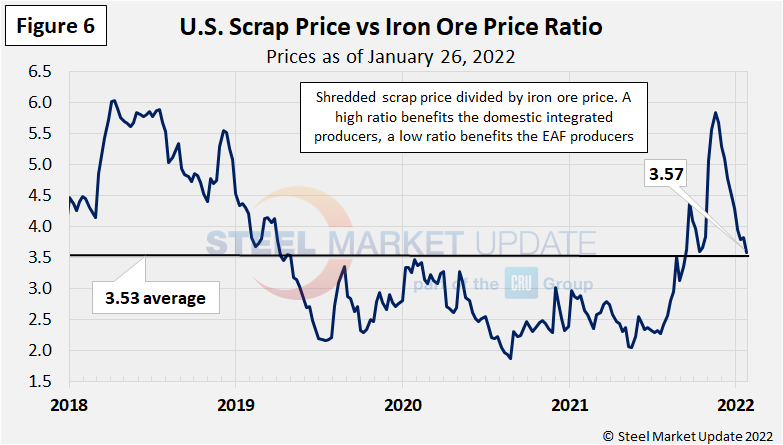
Figure 7 shows how the price of hot rolled steel generally tracks with the price of busheling scrap. Bush declined $80 per gross ton over the past month, down $130 from the July/August peak, but up $28 from one year ago. The SMU hot rolled price average declined last week for the 16th consecutive week, with the Jan. 25 average down $90 week over week to $1,335 per ton; this is down $265 from the prior month, and down $620 from the early-September peak, yet still up $195 over one year ago.
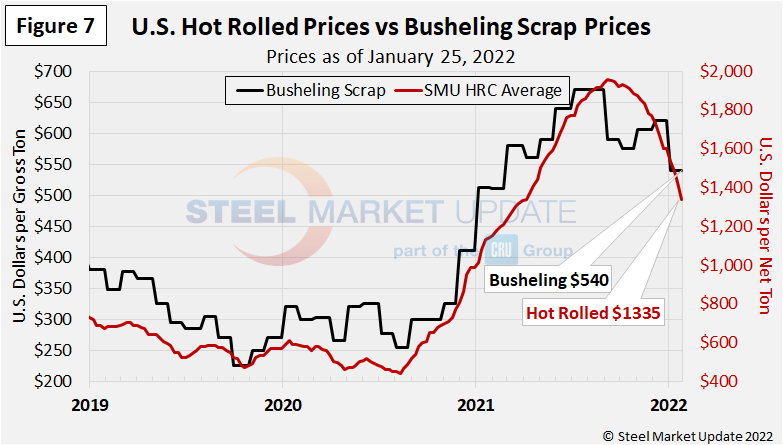
Zinc and Aluminum
Zinc, used to make galvanized and other products, continues to rise in cost. The LME cash price was $1.64 per pound as of Jan. 25, up 5% from three months prior and up 38% from the same time last year (Figure 8). The LME cash price for zinc reached a multi-year high of $1.74 per pound in October.
Aluminum prices, which factor into the price of Galvalume, have been trending upwards since May 2020. Aluminum prices also reached a record high of $1.44 per pound back in October, the highest daily price seen in our 10-year history (note that aluminum prices often have large swings and return to typical levels within a few days, as seen in the graphic below; we do not consider those surges in our overall high/low comparisons). The latest LME cash price of aluminum is approaching that October high, now at $1.40 per pound as of Jan. 25, up 8% compared to three months ago and up 53% from one year prior.
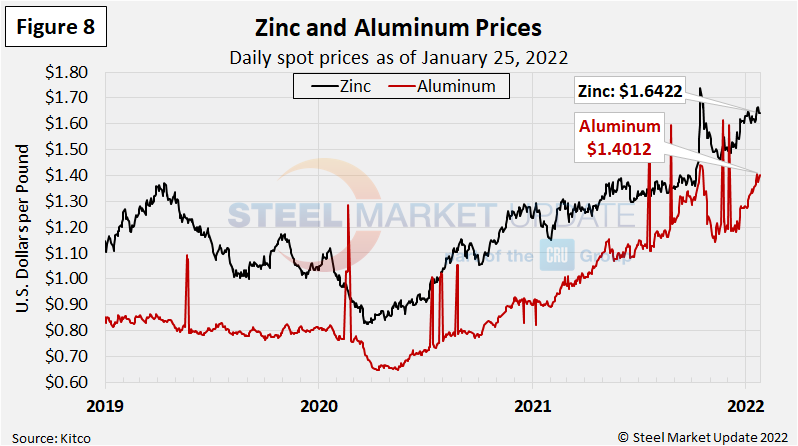
By Brett Linton, Brett@SteelMarketUpdate.com

Brett Linton
Read more from Brett LintonLatest in Steel Products Prices North America

CRU: Q3 will be the lowest point in current sheet price cycle
CRU Principal Analyst Shankhadeep Mukherjee expects a restocking cycle for steel sheet products in most parts of the world due to either low inventories or seasonally stronger demand.

CRU: US rebar and wire rod prices rise alongside S232 increase
CRU Senior Steel Analyst Alexandra Anderson discusses current market and pricing dynamics for long steel products in the US.

SMU Price Ranges: Sheet and plate steady ahead of Independence Day
Sheet and plate prices were little changed in the shortened week ahead of Independence Day, according to SMU’s latest check of the market.

Nucor maintains plate prices, opens August order book
Nucor aims to keep plate prices flat again with the opening of its August order book.

Nucor CSP remains level at $900/ton
Nucor maintained its weekly list price for hot-rolled (HR) coil this week, following two consecutive increases.
